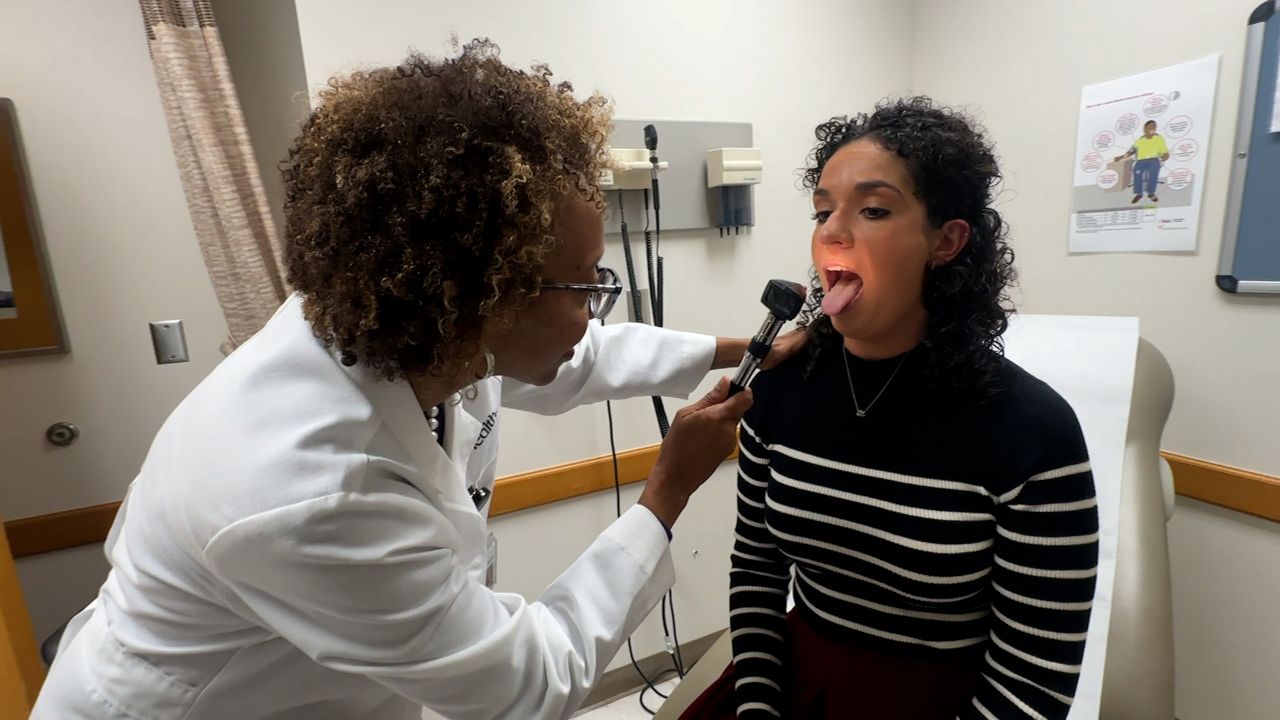Fitness
Fitness Is My Fuel for Overcoming Crohn’s Disease Setbacks
:max_bytes(150000):strip_icc()/vwh-morgan-check-headshot-02_720-f34584e71065417584b9c682c07c3e55.jpg)
Meet the Author
Morgan Check is a pediatric nurse practitioner at Cedars-Sinai Inflammatory Bowel Disease Center in Los Angeles. As someone who lives with Crohn’s disease, Check is passionate about raising awareness and supporting others through advocacy and education. When not working, she enjoys fitness and spending time with her family.
At 15, I was playing lacrosse and enjoying life as a busy teenager when I began experiencing bloody diarrhea, exhaustion, and intense abdominal pain that I could not ignore. I immediately told my parents and went to see a pediatrician.
My pediatrician referred me to a local adult gastroenterologist, where I underwent a flexible sigmoidoscopy (a procedure in which a healthcare provider uses a flexible tube with a light and camera at the end to examine the rectum and lower colon). That day, I was diagnosed with ulcerative colitis (UC).
UC is a chronic inflammatory bowel disease that affects the large intestine. It’s different from Crohn’s disease, which is an inflammatory bowel condition that can affect any part of your digestive system, from mouth to anus. I was diagnosed with UC earlier in my life, then Crohn’s disease later, after my large intestine was removed, which can happen in some circumstances.
Early Treatment and Surgery
I was initially prescribed the corticosteroid prednisone and oral mesalamine (an anti-inflammatory drug to treat UC), but I didn’t receive much follow-up care. I was unsatisfied with that treatment, so my parents and I took matters into our own hands.
We contacted the Crohn’s and Colitis Foundation, which connected us with Dr. Robert Baldassano, a renowned expert at the Children’s Hospital of Philadelphia (CHOP). He eventually treated me as one of the first pediatric UC patients to receive Remicade (infliximab). The bimonthly intravenous infusion was a miracle drug to me. It relieved debilitating abdominal pain and allowed me to continue playing Division 1 college lacrosse.
But that was just the beginning. Since then, I’ve had my share of surgeries. At 25, I underwent J-pouch surgery (an often multistage procedure in which the colon is removed and a pouch is formed from the small intestine to allow bowel movements to pass). I lived with an ostomy bag (to collect waste outside the body) for three months while I waited for my body to recover from the first stage of the two-stage surgery.
The J-pouch surgery was effective in treating symptoms in my large intestine, but the disease took hold in other areas of my digestive system. Despite the surgery, I continued experiencing frequent loose stools day and night, sometimes up to eight each day. While this can be normal for some people, it wasn’t for me. Further testing revealed ulcers throughout my small intestine, and I was diagnosed with Crohn’s disease in my late 30s.
Fitness as a Crohn’s Management Tool
Fitness, especially running, has been a key part of maintaining my physical and mental health with Crohn’s disease. I wasn’t always a runner—I actually hated it when I played lacrosse—but after college, I found solace in it.
Running gave me a sense of control when I felt like my body was working against me.
Over the years, I’ve explored various forms of movement—from weight lifting to Pilates—while focusing on exercises that help improve bone density issues caused by the corticosteroids I was on in my youth.
I began practicing yoga shortly after moving to Los Angeles in 2013, and it quickly became essential to managing my mental and physical health. I even became a 500-hour trained and certified yoga teacher because I strongly believe in breath-to-movement training. This form of training helps regulate the vagus nerve (which supports the rest-and-digest bodily functions). It offers significant benefits to my patients (those with and without IBD) and their caregivers.
Most recently, I brought my yoga practice into the hospital during my monthlong stay following two surgeries to fix my J-pouch. I adapted gentle stretches to do in the hospital bed, which helped me through that difficult recovery.
Now, I’m preparing for the Malibu Moves 5K race, a significant milestone in my recovery after a recent surgery. I’ve been rebuilding my strength slowly, starting with 10-minute walks on the treadmill and gradually increasing intensity. As I train, I raise funds for Connecting to Cure Crohn’s and Colitis, a nonprofit organization that has done incredible work supporting patients and families. I hope to inspire others with my story and show that anything is possible, even after major setbacks.
My Top Three Tips for Staying Active
It’s not always easy to be active while living with Crohn’s disease. Over the years, I’ve learned a lot about my body and staying fit with Crohn’s disease, and I have some rules I live by when it comes to being active.
1. Listen to Your Body
On days I feel low in energy or am flaring (having intense symptoms), I take it as a sign that my body needs to take it slow. So, I prioritize low-impact movement—like taking the dogs on a walk or doing a gentle yoga flow—and save running and plyometric training (involving short, intense bursts of energy) for a day when I’m not feeling worn out.
2. Push Yourself When You Feel Good
I love to push it to the limits because I never know when the bad days are coming. It’s sort of a negative way to think of it, but this disease sucks. I’ve had a 10-year period of remission in the past, which was great. Some patients may never experience a flare beyond the one just prior to their diagnosis. I like to get my body in the best shape possible when I can tolerate intense exercise and be gentle with myself when I’m not feeling my best.
3. Prioritize Hydration
I use LMNT brand hydration packs since people with Crohn’s need the extra salt and electrolytes, especially if we are training and sweating. I consume one or two hydration packs daily and a ton of water. There are many hydration product brands; I’ve also found DripDrop and Liquid I.V. to be decent.
Eating Well With Crohn’s
I highly recommend talking to a registered dietitian to help you calculate your protein, carb, and fat goals. When I’m flaring or not feeling well, I drink a meal-replacement shake instead of eating. (I like Kate Farms Peptide nutrition formula because it’s much easier for my body to digest and process.)
When I am feeling good, I usually drink a homemade smoothie after my morning workout, which typically includes:
- Almond milk or whatever milk alternative we happen to have in the fridge that week
- A small handful of fresh or frozen fruit (or whatever my kid doesn’t eat at breakfast)
- One-third to one-half of an avocado
- Protein powder
- Two servings of vegetables (e.g., spinach, kale, or whatever leafy green is on its last days in the fridge)
Drinking a morning smoothie is a no-brainer for me; this way, I know I’ve consumed a variety of vegetables, healthy fats, fruit, and protein.
Thriving With Crohn’s Disease
Reflecting on my journey, I realize that my story is about more than just surviving Crohn’s disease—it’s about thriving. My experience living with UC and then Crohn’s disease has shaped me in profound ways. It has taught me the importance of self-care, listening to my body, and finding joy in the everyday moments. It has also inspired me to advocate for others with chronic illnesses.
If I can share one message with those reading my story, it’s this: You can live a full, vibrant life with Crohn’s disease. Although your diagnosis can affect every aspect of your life—from work to relationships and hobbies—don’t let it define you—let it empower you.
As told to Lindsay Curtis.







